- Home
- Alison Weir
Six Wives of Henry VIII Page 10
Six Wives of Henry VIII Read online
Page 10
Henry's education had been extremely thorough. He could speak and write fluent French and Latin, understood Italian well and spoke it a little, and by 1520 was conversant with Spanish. He loved reading, and his favourite books during his younger years were the works of St Thomas Aquinas and Duns Scotus. However, in 1519, he began to suffer from recurring headaches and migraines, which made reading and writing 'somewhat tedious and painful'. The headaches continued to plague him for the rest of his life, and may well account to some extent for his later irascibility.
The King wrote several treatises during his life, and his letters to the Vatican were said to have been the most eloquent received there, for which reason they were exhibited in the consistory. His literary talents extended to passionate love letters, as well as poetry. His chief interest was theology; he was a master of doctrinal debate, of which he was 'very fond', and would hear others out with 'remarkable courtesy and unruffled temper'. He was good at mathematics, and also keenly interested in astronomy, a passion he shared with Sir Thomas More, who would often join him on the leads above Greenwich Palace to look at the night sky.
Henry VIII professed all his life a deep and sincere faith in God, and for many years regarded himself as a true sonofthe Church of Rome. He was known to attend as many as six masses in a single day, and at least three on days when he hunted. Every evening, at 6.0 p.m. and 9.0 p.m., he went to the Queen's chamber to hear the offices of vespers and compline. At Easter, he 'crept to the Cross' on his knees, with all due humility. He also held himself up as an authority on doctrine, and was acknowledged as such by his contemporaries because 'he is very religious'.
In 1521, while convalescing after a fever, the King added the finishing pages to a Latin treatise he had been working on for some time with assistance from others, notably Sir Thomas More. It was entitled A Defence of the Seven Sacraments against Martin Luther,and was an attack upon the heresies propagated since 1517 by a former monk of Wittenburg in Germany, who would thirty years later be hailed in England as the founder of the Protestant religion. Henry was well aware that information about Luther's controversial teachings was already filtering through to England, and had gained hold in Germany. Yet although he himself enjoyed disputing points of doctrine, heresy was another matter entirely, and he was appalled that any credence should be given to the corrupt teachings of 'this weed, this dilapidated, sick and evil-minded sheep'.
Henry VIII, like most of his contemporaries, was well aware that there were certain abuses within the established Church that needed reforming, but he was a religious conservative at heart, and would not countenance heresy as a means of achieving this. To Henry, and men like him, heresy was a poison that threatened the very foundations of the superstructure of Church and State as one body politic. It encouraged disaffection among the lower classes, challenged the divinely appointed order of things, and - worst of all - meant eternal damnation for those who succumbed to its lure. In sum, it represented every evil that could be manifested in a well-ordered world, and must therefore be eradicated.
In his book, the King's central argument was for the retention of the seven sacraments - Luther had rejected all but two. Marriage, in particular, was upheld by Henry, for it turned 'the water of concupiscence' into 'wine of the finest flavour. Whom God hath joined together, let no man put asunder.' Luther had also rejected the authority of the Pope, but the King exhorted all faithful souls to 'honour and acknowledge the sacred Roman See for their supreme mother'. When Thomas More suggested that this was a little extravagant, Henry protested that he was so 'bounden' to the See of Rome that he could not do enough to honour it: 'We will set forth the Pope's authority to the uttermost,' he declared - words he was later to regret.
Although Luther himself accused Henry VIII of raving 'like a strumpet in a tantrum' in the book, and spoke of 'stuffing such impudent falsehoods down his throat', the Pope received the treatise with rapturous praise, and in the autumn of 1521 rewarded Henry with the titleFidei Defensor(Defender of the Faith) in gratitude. Elizabeth II still bears this title today, though Britain has been an independent Protestant state for more than four centuries.
Apart from religion, Henry loved gambling, good food, and dancing, in which he did 'marvellous things, both in dancing and jumping, proving himself indefatigable'. He was obsessive about hunting, which he preferred above all else. The 'grease season' was traditionally in the autumn, but Henry also hunted at other times of the year, both for pleasure and to provide for his table. In the autumn, however, he would take a rest from state duties and go on a progress through parts of his kingdom, chiefly for the purpose of discovering the delights of different chases. 'He never takes his diversion without tiring eight or ten horses,' wrote the Venetian ambassador in 1519; 'when he gets home, they are all exhausted.' In fact, he exhausted most of his male companions too by 'converting the sport of hunting into a martyrdom'. And, after a successful day, it was not unknown for him to boast about his success for three or four hours at a time. Queen Katherine enjoyed hunting too, and sometimes accompanied her husband.
Being an excellent horseman and an expert in the martial arts, Henry was also passionately fond of that other great medieval sport, the jousting tournament, which was almost a weekly event during the early years of his reign. He was a fine jouster who was conspicuous in the combats, both on horseback and on foot, excelling everyone else 'as much in agility at breaking spears as in nobleness of stature'. At one tournament in 1518, Henry performed 'supernatural feats', causing his magnificent charger to jump and execute other acts of horsemanship'. Then, changing mounts, he made his fresh steed 'fly rather than leap, to the delight and ecstasy of everybody'. The Queen would never miss a joust if she could help it, and watched with her ladies from specially erected pavilions at the side of the lists.
Another sport at which he excelled was tennis, not the game played at Wimbledon today, but 'royal' (real) tennis played on a hard, enclosed court- Henry's court is preserved at Hampton Court - an altogether tougher and more dangerous game. The Household Accounts for the year 1519 record a payment for 3V4 yards of black velvet for a 'tennis coat for his Grace'. 'It is the prettiest thing in the world to see him play, his fair skin glowing through a shirt of the finest texture,' reported the Venetian ambassador.
Henry enjoyed hawking, 'running the ring', 'casting the bar', wrestling, and archery. He practised daily at the archery butts and passed a law requiring every man in England to spend an hour doing the same on Saturday afternoons, such was his faith in the reputation of the longbow as the traditional instrument of English military success; he himself could 'draw the bow with greater strength than any man in England'. He also wished to ensure that the young men of his court were expert in the martial skills, and on one occasion in 1510 arranged for a fight with battle axes to take place in the presence of the Queen and her ladies in Greenwich Park, thus mixing military exercise with pleasure.
Henry had a lifelong love of the sea and all things maritime. He ordered the building of several great ships - including theHenry Grace-a-Dieuand theMary Rose -and has been rightly acclaimed as the founder of Britain's modern navy. In 1515, he went with the Queen to review his fleet at Southampton, wearing a 'sailor's coat and trousers of frieze cloth of gold' and carrying 'a large whistle with which he whistled almost as loud as a trumpet'. He was in his element that day, on board his flagship, where for a couple of hours he enjoyed himself immensely, acting as pilot.
His pleasures were not always so boisterous. He inherited from his Welsh forbears an abiding love of music, and could play a number of instruments, sing and compose. He was particularly accomplished on the lute, harpsichord, recorder, flute and virginals, and would often entertain the court by singing and playing his own compositions. He could 'sing from the book at sight', often set his own verses to music, and composed anthems and hymns. One, 'O Lord, the maker of all things', is still sung in churches today. Yet Henry preferred writing secular songs, mostly in the courtly tradition, with English
or French lyrics. The most famous were 'Green groweth the holly' (probably written for Katherine of Aragon),'Adieu Madame et ma mahtresse(written much later for Anne Boleyn), and 'Pastime with good company', which vividly portrays his mood at the commencement of his reign.
In these early years, Henry VIII's pleasures took precedence. His attitude to kingship and the duties of state he was required to perform was a different matter entirely. He had had a cloistered upbringing before suddenly finding himself in a position of power, honour and wealth, a heady experience for a youth of eighteen. Perhaps it was not surprising that he spent his days in pursuit of amusement rather than learning statecraft. Matters of state, he felt, could safely be left in the hands of his Privy Council; in fact, 'he did not care to occupy himself with anything but the pleasures of his age'.
The mature men appointed to advise him were so slow that they caused him 'much disgust': Henry preferred the company of the young men of the court with whom he had shared his boyhood. His councillors were alarmed to see him squandering his father's carefully amassed wealth on expensive and frivolous pastimes when he should have been learning about the government of his kingdom, and they were at pains to persuade him - not without difficulty - to sit in on meetings of the Privy Council, 'with which at first he could not endure to be troubled'. As the French ambassador observed, 'Henry is a youngling, cares for nothing but girls and hunting, and wastes his father's patrimony.'
His councillors hoped that, given time to mature, he would settle down and fulfil their expectations. Yet it was a slow process. In 1514, the Milanese ambassador complained that the King had put off their discussion about politics to another time, 'as he was then in a hurry to go and dine and dance afterwards'. Affairs of state, even after five years on the throne, were still ranking fairly low on Henry's scale of priorities. Even as late as 1519, the Papal nuncio reported that he was 'devoting himself to accomplishments and amusements day and night, being intent on nothing else'. All business was left to Cardinal Wolsey, 'who rules everything'. This was the situation that endured until the late 1520s, when Henry began to take the reins of government into his own hands.
It was the outward trappings of kingship that were important to Henry VIII during these early years: the pageantry, the ceremonial, the gorgeous robes, the priceless jewels, and the glittering court, and he passionately believed that they all served to enhance the image of royalty. It was Henry who was the first English King to express a preference to be styled 'Your Majesty' rather than the customary 'Your Grace'. He saw himself, indeed, as a hallowed being set apart from the ordinary species of men, and it was a persona he consciously cultivated, so confident did he become of his own divinity. No King of England before him enjoyed such power, nor ever would after him.
A man of contrasts, he personified for the average Englishman all the strengths and virtues of his race, and it was this that lay at the root of his vast popularity. As Prince of Wales his charm had won the hearts of his people, and now, exalted to kingship, he was feted as the herald of a new age, a golden epoch that would witness a return to England's former glory, the revival of the days of chivalry, and the ultimate conquest of France - the new King's ambitions were well-publicised. The English loved Henry for his youth, his beauty, his high courage, his accomplishments, and above all for having identified their interests as his own. He was very knowledgeable about most of the issues that touched their lives, having been born with a talent for absorbing information, and there was 'no necessary kind of knowledge, from King's degree to carter's, but he had an honest sight of it'. He was fond, in his younger years, of mingling incognito among his subjects, in order to learn their views on the issues of the day.
In 1509, it was said that the whole world was 'rejoicing in the possession of such a King'. The passing of years did not dampen this enthusiasm, for in 1513 we are told that 'love for the King is universal with all who see him, as his Highness does not seem a person of this world but one descended from Heaven'. Erasmus, later still, described Henry as 'more of a companion than a King', a view that would have earned the hearty agreement of those courtiers with whom the King hunted, tilted, and otherwise amused himself. This common touch came naturally to him, and would serve to hold the love and loyalty of his subjects until he died.
In an era of arranged marriages, men were not censured for taking their pleasure when they found it. In his youth, the King was commendably discreet about such matters, so much so that we know absolutely nothing about his sexual activities, if any, before his accession. As Prince of Wales, he had led a cloistered life and had cultivated a chivalrous attitude towards the opposite sex, seeing himself as the knight errant whose role it was to flirt, offer elegant compliments, and profess undying love. When he came to the throne, women were waiting for him in droves, and freed from the confines of his princely existence, he made the most of his position and took what they offered. In this respect, though he was far from virtuous by modern standards of morality, by the standards of his time, and compared to other princes of the age, he was quite circumspect. Thanks to his discretion, Queen Katherine never knew of these early infidelities, which were fleeting anyway, and as far as Henry was concerned, they had nothing to do with her. His love for her was on a different plane completely.
Having sex was one thing, talking about it quite another. The King was very prudish, and was known to blush at bawdy remarks. He abhorred lightness in married women, even though he was not above pursuing them himself. And from his wife, he expected total fidelity and absolute obedience.
Katherine of Aragon first appeared at court as Queen of England on the day her marriage to the King was proclaimed, 15 June 1509. Henceforth, she would be at Henry's side at all state and court functions. She had already adopted the pomegranate, symbol of fertility, as her personal badge, and now she took the motto 'Humble and Loyal' for her personal device. In the royal palaces of England, an army of carpenters, stonemasons and embroiderers were already carving, chiselling and stitching her initials and Henry's, 'H' and 'K', on every available surface, and her throne was set beside the King's under the rich canopy of estate.
In 1509, Fray Diego described Katherine as 'the most beautiful creature in the world'. Marriage certainly made her seem so. She was twenty-three, and had kept her looks thus far. She was plump, pretty, and still had beautiful red-gold hair that hung below her hips when loose. Yet, within six years, she had lost her youthful bloom and her figure, and in 1515 was described by the Venetian ambassador as 'rather ugly than otherwise'. Sadly, he spoke the truth. By 1515, Katherine had suffered several bitter disappointments and five pregnancies, and these had aged her considerably.
A miniature of her painted by Lucas Hornebolte (now in the National Portrait Gallery) survives from this time, and shows with cruel clarity that the pretty girl depicted in Miguel Sittow's portrait of 1505 had in fact aged almost beyond recognition in ten years. Hornebolte's portrait is of a stout, mature woman with a face overshadowed by anxiety and sadness. The red-gold hair seems to have darkened (although this may be due to pigment in the paint), and is gathered into a bun or plait on the nape of the neck, being surmounted by a Juliet cap, a rare fashion in England at that time.
This miniature should be compared with a portrait painted about five years later, which has been attributed to Johannes Corvus. Several versions exist, the most famous being in the National Portrait Gallery in London. Katherine is here shown wearing the gable hood traditionally associated with her, with long frontlets that would shortly become unfashionable. She is in a rich brown velvet gown with a low square neckline and furred sleeves, and is portly in build, with no pretensions to beauty, having a pale face in which the mouth has a slightly disdainful look and the firm chin juts out. A similar portrait, probably painted from a lost original during the reign of Mary I and until recently in the possession of the Royal Academy of Arts, is kinder, and shows the Queen smiling graciously. Yet the face is the same, that of a woman no longer young, obviously well-bred, with t
he marks of sadness etched upon it. And the figure, camouflaged in dark velvet furred with ermine with ropes of gold chains slung across the bodice, has likewise gone to ruin, spoiled by frequent childbearing. Perhaps the best existing likeness of Katherine in her later years is the fine miniature in the collection of the Duke of Buccleuch, which shows a stout woman, with large attractive blue eyes, holding a monkey.
Katherine's gradually fading looks were brought increasingly into contrast by the maturing beauty of her younger husband. She selected her ladies for their looks as well as their background, which showed up even more her own ageing face. To compensate for this, she took care to dress herself as magnificently as she could, being, like her mother, 'a ceremonious woman in her attire'. On marrying the King, she had been provided with a sumptuous new wardrobe, most of it in the English fashion. After her marriage, she rarely wore the farthingale, although she did very occasionally appear in Spanish dress. Her new gowns would have had court trains several yards in length, and were of rich materials such as satin, velvet - often with raised gold embroidery - or cloth of gold. If one had wealth, it was not considered vulgar to display it.

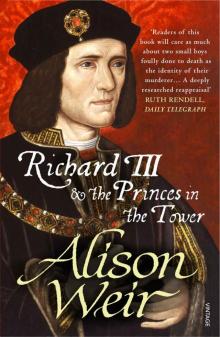 Richard III and the Princes in the Tower
Richard III and the Princes in the Tower Britain's Royal Families: The Complete Genealogy
Britain's Royal Families: The Complete Genealogy The Lady in the Tower: The Fall of Anne Boleyn
The Lady in the Tower: The Fall of Anne Boleyn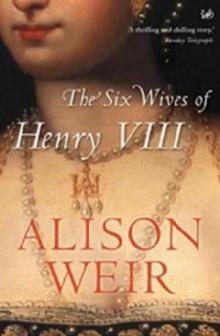 Six Wives of Henry VIII
Six Wives of Henry VIII Elizabeth of York: A Tudor Queen and Her World
Elizabeth of York: A Tudor Queen and Her World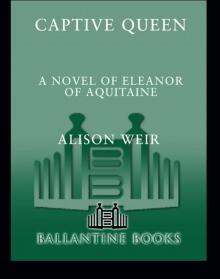 Captive Queen
Captive Queen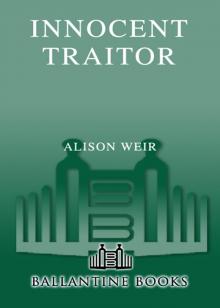 Innocent Traitor
Innocent Traitor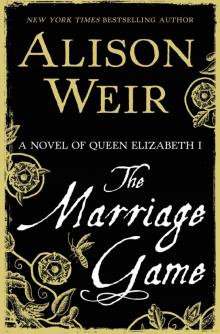 The Marriage Game
The Marriage Game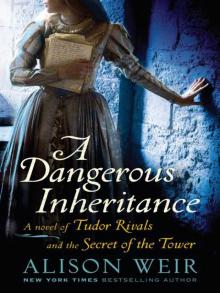 A Dangerous Inheritance
A Dangerous Inheritance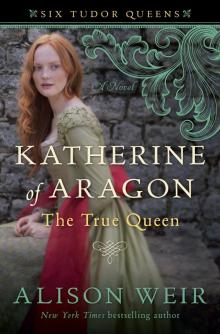 Katherine of Aragón: The True Queen
Katherine of Aragón: The True Queen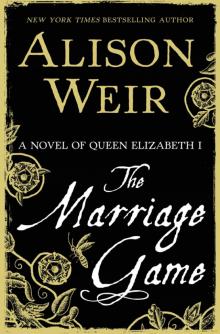 The Marriage Game: A Novel of Queen Elizabeth I
The Marriage Game: A Novel of Queen Elizabeth I Princes in the Tower
Princes in the Tower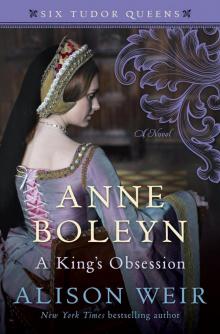 Anne Boleyn: A King's Obsession
Anne Boleyn: A King's Obsession Traitors of the Tower
Traitors of the Tower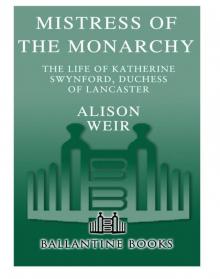 Mistress of the Monarchy: The Life of Katherine Swynford, Duchess of Lancaster
Mistress of the Monarchy: The Life of Katherine Swynford, Duchess of Lancaster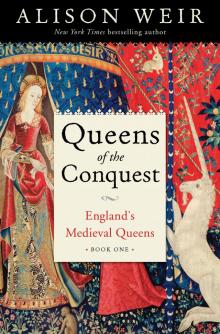 Queens of the Conquest: England’s Medieval Queens
Queens of the Conquest: England’s Medieval Queens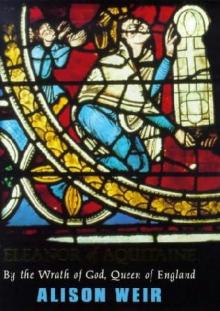 Eleanor of Aquitaine: A Life
Eleanor of Aquitaine: A Life Mary, Queen of Scots, and the Murder of Lord Darnley
Mary, Queen of Scots, and the Murder of Lord Darnley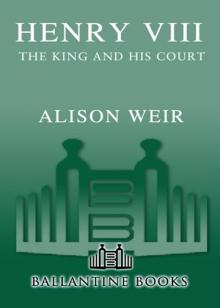 Henry VIII: The King and His Court
Henry VIII: The King and His Court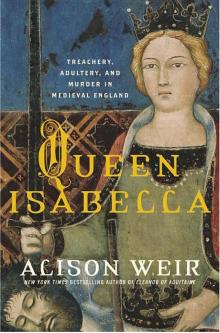 Queen Isabella: Treachery, Adultery, and Murder in Medieval England
Queen Isabella: Treachery, Adultery, and Murder in Medieval England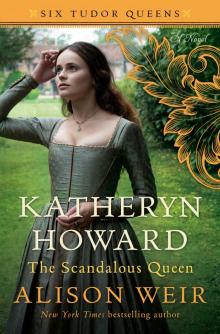 Katheryn Howard, the Scandalous Queen
Katheryn Howard, the Scandalous Queen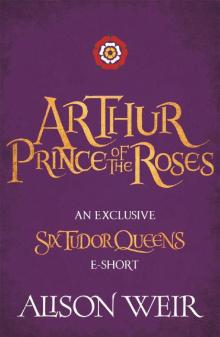 Arthur- Prince of the Roses
Arthur- Prince of the Roses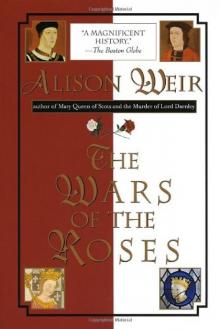 The Wars of the Roses
The Wars of the Roses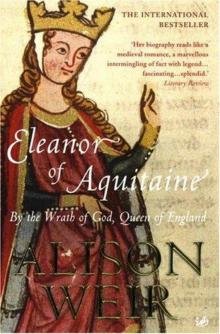 Eleanor of Aquitaine: By the Wrath of God, Queen of England
Eleanor of Aquitaine: By the Wrath of God, Queen of England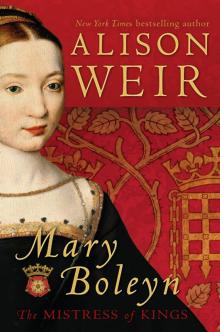 Mary Boleyn: The Great and Infamous Whore
Mary Boleyn: The Great and Infamous Whore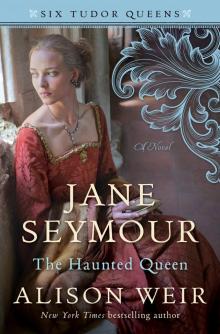 Jane Seymour: The Haunted Queen
Jane Seymour: The Haunted Queen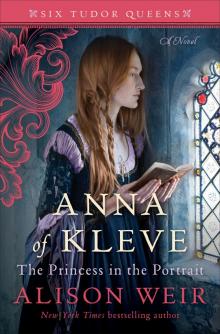 Anna of Kleve, the Princess in the Portrait
Anna of Kleve, the Princess in the Portrait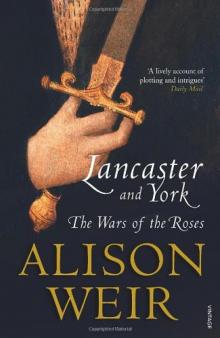 Lancaster and York: The Wars of the Roses
Lancaster and York: The Wars of the Roses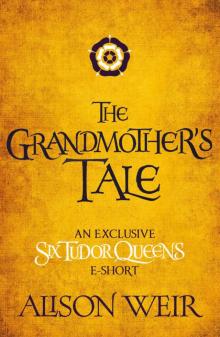 The Grandmother's Tale
The Grandmother's Tale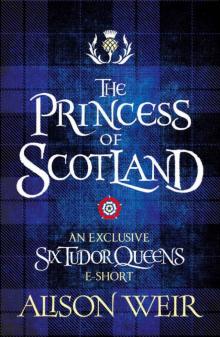 The Princess of Scotland (Six Tudor Queens #5.5)
The Princess of Scotland (Six Tudor Queens #5.5)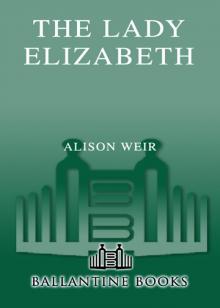 The Lady Elizabeth
The Lady Elizabeth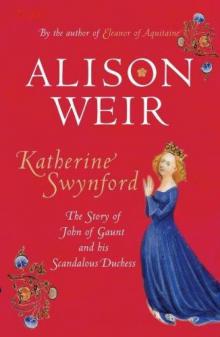 Katherine Swynford: The Story of John of Gaunt and His Scandalous Duchess
Katherine Swynford: The Story of John of Gaunt and His Scandalous Duchess The Curse of the Hungerfords
The Curse of the Hungerfords The Lost Tudor Princess: The Life of Lady Margaret Douglas
The Lost Tudor Princess: The Life of Lady Margaret Douglas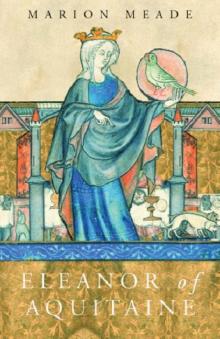 Eleanor of Aquitaine
Eleanor of Aquitaine Mistress of the Monarchy
Mistress of the Monarchy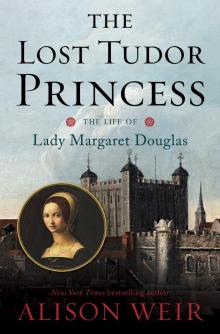 The Lost Tudor Princess
The Lost Tudor Princess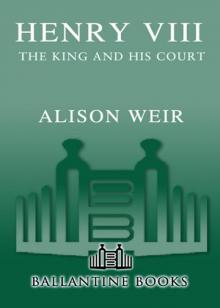 Henry VIII
Henry VIII Anne Boleyn, a King's Obsession
Anne Boleyn, a King's Obsession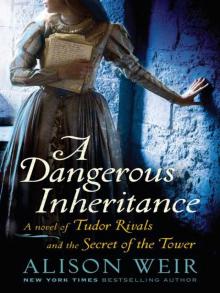 A Dangerous Inheritance: A Novel of Tudor Rivals and the Secret of the Tower
A Dangerous Inheritance: A Novel of Tudor Rivals and the Secret of the Tower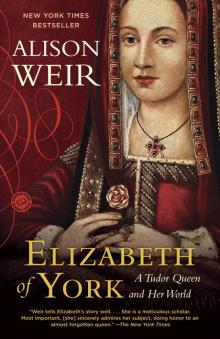 Elizabeth of York
Elizabeth of York Katherine of Aragon, the True Queen
Katherine of Aragon, the True Queen Katherine Swynford
Katherine Swynford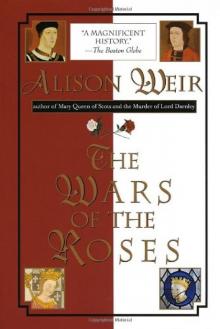 Wars of the Roses
Wars of the Roses Queens of the Conquest
Queens of the Conquest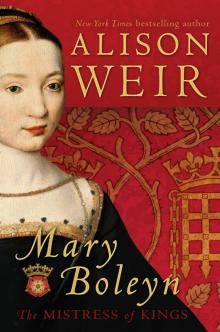 Mary Boleyn
Mary Boleyn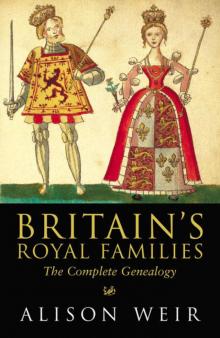 Britain's Royal Families
Britain's Royal Families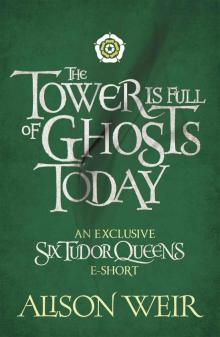 The Tower Is Full of Ghosts Today
The Tower Is Full of Ghosts Today Life of Elizabeth I
Life of Elizabeth I Anne Boleyn A King's Obssession
Anne Boleyn A King's Obssession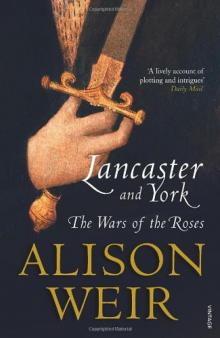 Lancaster and York
Lancaster and York Jane Seymour, the Haunted Queen
Jane Seymour, the Haunted Queen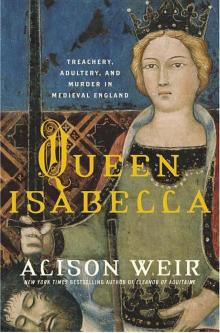 Queen Isabella
Queen Isabella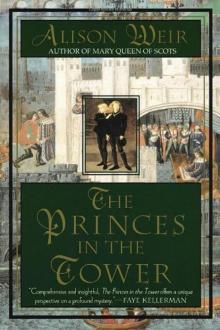 The princes in the tower
The princes in the tower